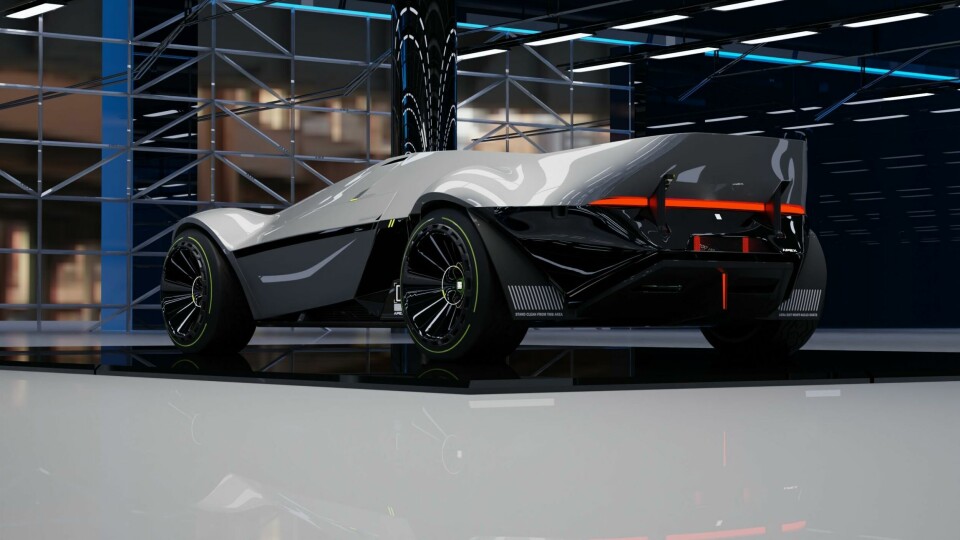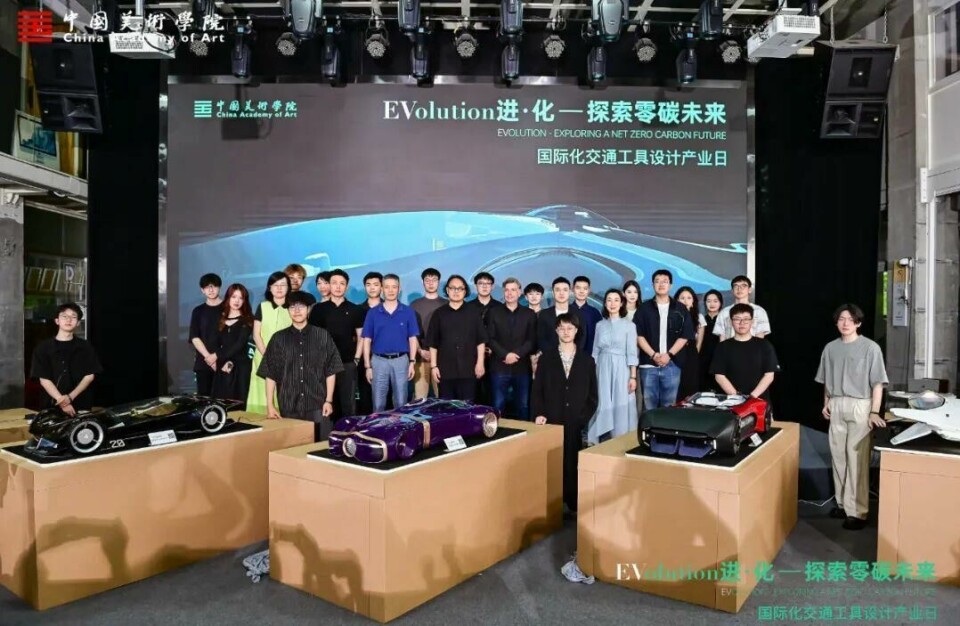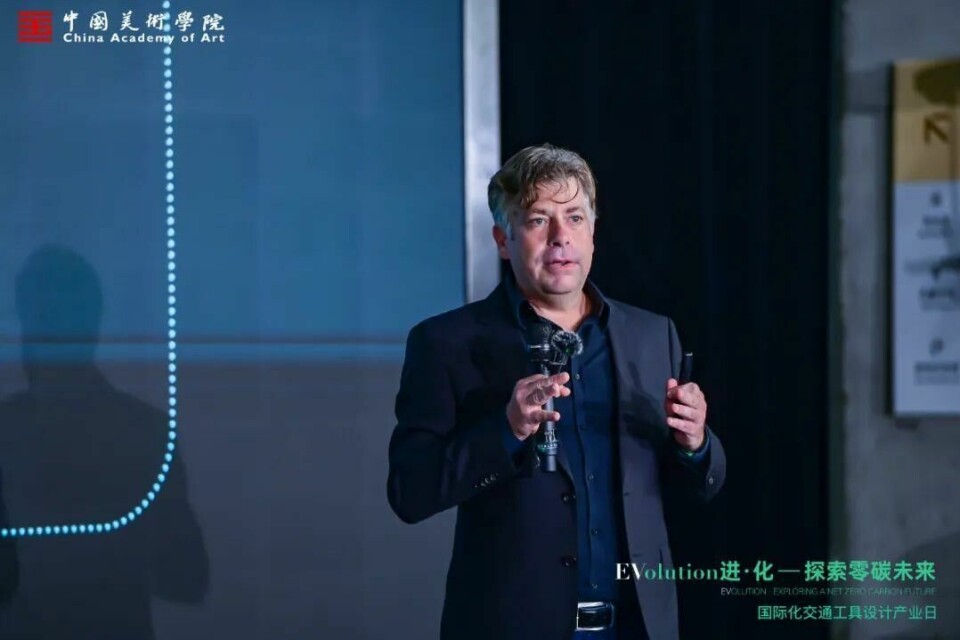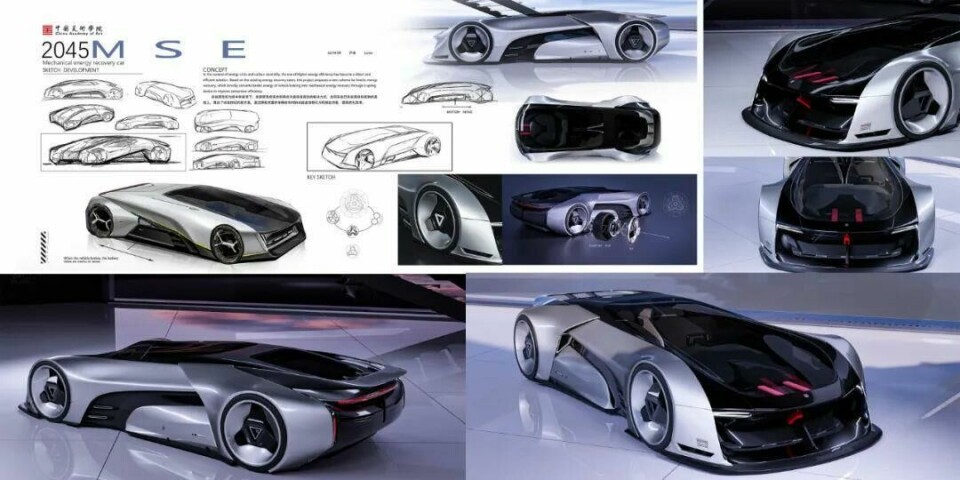
China Academy of Art on 2023 transportation design show
CDN takes a look at some of the projects on show at the end of year Transportation Design show
It’s degree show season and although we have covered a handful of events in Europe, there is plenty going on further afield as well. The China Academy of Art (CAA) recently presented the work of students on its Transportation Design course at the Xiangshan Campus in Hangzhou, with projects covering both exterior and interior design.
For the interiors thesis, the course leaders put together a “unique collaboration” between Transportation and Fashion design students, supported by Zeekr, which challenged them to explore the future “luxury interior experience.” By bringing students from different disciplines together, the thinking was that projects would push the boundaries of what is typically expected of the cabin.

“We wanted to experiment with bringing together creativity from these different disciplines to enrich the project and bring fresh insights into the Transportation space, including CMF, concepts and most importantly, the experience,” explains James Hope, head of the Transportation Design Institute at the CAA. Bringing these groups of students together with Zeekr would “achieve a truly unique result,” he adds. “We had the teams develop digital models to realise the interior design, along with supporting art pieces related to the themes. Instead of fabricating the traditional physical models, we then had the students integrate these digital models into an immersive VR experience.”
That VR experience was then exhibited at Zeekr’s flagship store during the Shanghai auto show and demonstrated to senior Zeekr designers. Hope thinks that, all things considered, it was a solid partnership: “We typically try to partner with a professional design studio for the course and I must say Zeekr have been a wonderful collaboration partner in the truest sense, with their time, inputs and support of the project. It’s also our first truly global collaboration in Transportation working exclusively with the Zeekr team in Sweden.”

On the exteriors front, the brief carried a Carbon Neutral theme which built on an existing exercise within the faculty dubbed “(EV)olution: Envisioning a Net Zero Future.” The requirements were kept simple, says Hope, with a vision of future personal mobility in 2040. Importantly, it was not only about the resulting design but shaping a story around it as well. This would naturally lead students to go down the route of designing an EV, but students were encouraged to think even broader when exploring future alternatives. “We wanted students to focus on expressing their personality and critical thinking,” notes Hope, “connecting the dots to explore innovation and adding value to their intended target consumer profiles.” This is a common thread that CDN has seen at degree shows in recent years, which have very much evolved from being car-centric to mobility-centric.
Reflecting on the show, Hope observes that there is a continued transition toward digital presentations, rather than physical scale models set up on a table. This, he says, is due to the “current state of technology and social media, which can generate more attention… Videos are great for storytelling and giving projects that extra sense of dynamic realism.” Regardless, students are still being taught the importance of bringing physical and digital together, particularly on exterior projects where they can develop CAD models into 3D, “realising the holistic development process,” Hope explains. “We do have a clay modelling area, too, as I believe it’s important for designers to understand volume, sculpture and the subtly of how millimetres can make the difference for quality surfacing.”
Below is a selection of projects shown at the 2023 end of year show, with lightly-edited descriptions from the students themselves.
1. Wind Vision by Liu Diannan Alison
This future concept vehicle is a test bed for aero efficiency. Research supports that optimised aerodynamics can significantly increase range and reduce energy consumption. What makes this concept truly unique is the integration of turbines that spin through wind channels to create on-board energy capture systems to help increase battery charging while driving. This concept also uses a unique Oyster shell glass – recently developed – which has incredible bending and shatter characteristics to form a whole body shell that is transparent, highlighting the beautiful wind-inspired exterior shape, internal structure and feature-rich underbody design, which has been developed to exceptional detail and quality execution.
2. ULT 700 Conquerer by Zou Hanyu Paul Quinland
This ultimate expression of guilt-free luxury combines the use of hydrogen as a fuel source with jet engine technology to create a a new genre of “Hyper Luxury Vehicles.” As hydrogen is being developed as a potential for future zero source emissions and is the most abundant molecule in the universe, its potential as a fuel source holds great promise considering the emissions being only water. As hydrogen in compressed form currently needs more storage tank capacity, this concept is developed as a single seat ultimate personal luxury vehicle with the package space devoted to the high-output turbine engine and the fuel tanks to power this vehicle with hydrogen. A strong material suitability story culminates into an elegant, retro-futurism design that breaks new ground by introducing the Hyper Luxury Segment with a unique offering and the ultimate guilt-free luxury expression.
3. Apex by Wu Di
This electric rally car follows the trend of Formula E as a green alternative to F1 and is the ultimate expression of “form follows function” with a design that embodies protection and structural integrity to thrive in the extreme racing terrain of some of the worlds harshest environments. The V-shaped cross section of the body deflects stones and other debris that can be thrown its way, along with protecting from side impacts that utilise the triangle cross section as a structure. As the triangle is considered to be the strongest shape due to its geometry of compression and tension based on load at the apex, this is a tough vehicle to contend with. This vehicle is powered by a battery electric motor with the unique feature of having two side pods that are used for plug-and-play emergency battery reserves to ensure that driver can navigate to safety if the on board main battery runs out of energy. Multiple emergency batteries can be flown to the location of vehicle by drones, even in the most remote corners of the world. This vehicle also is adaptable to both on-road and off-road rallying as certain driving characteristics can be adopted by the vehicle.
4. Our Tribe by Wang Hao
As the electric motor produces the most (instant) torque at low end, this is the perfect adaptation for a utility-focused pick up as towing and carry weight capacity is significantly increased. Innovation with this concept is self evident, with the cabin being a cylinder-shaped encapsulation between the front and rear – acting as the pivot point for an articulating chassis structure that bends the vehicle at low speed to greatly reduce the turning radius, which is inherently compromised with large vehicles. This adaptation is inspired by construction vehicles such as diggers that need manoeuvrability in confined areas, articulated buses and semi-trucks with trailer. This concept strongly reflects the unique design which as been adapted in a fresh, exciting aesthetic for this type of vehicle.

5. M.S.E. by Lu Ren
This concept utilises a truly innovative energy capture system surrounding the platform’s battery cell, which uses the weight of the battery to generate kinetic energy transfer. Acceleration, braking and centrifugal forces activate the system. The vehicle design reflects the concept with a bold, exciting cab-forward design, an open front air intake area to feed direct cooling to the battery and a lower side structure that is designed to access the battery and system as a structural, integrated design element. The sleek low profile and large glass area reflects the aero considerations associated with electric vehicle efficiency.
6. Drifting Journey by He Yulong
This concept is based around the sense of exploration and adventure. The vehicle is designed to be able to explore the most extreme locations on earth as a nomadic electric vehicle. The Drifting Journey incorporates conceptual innovations that protect the occupants from extreme conditions and ensures the vehicle can recharge using only the power of nature with energy capture features. This is most self evident in the roof blades that extend out when recharging is needed, with a system that fans out with solar panels but also acts as a wind generator when rotating. Off the grid energy capture and conversion allows the Drifting Journey to take you anywhere.
7. N MODEL by Sun Hao
Since the beginning of recorded history, humans have regarded the sun as their life and hope. And now, for the first time ever, humans have unlocked the mysteries of the sun by recreating nuclear fusion on Earth. The reaction of the sun in its vast atomic space, which uses nuclear reactions to fuse hydrogen into heavier elements and releases enormous amounts of energy. Fusion energy is abundant, almost unlimited, and controllable fusion is also safe and reliable, which means it can provide us with long-term clean and efficient energy. No harmful gases such as carbon dioxide are produced, thereby reducing dependence on traditional petroleum energy and reducing environmental pollution. This design aims to achieve carbon neutrality by using the huge energy of nuclear fusion to power future GT sports cars.


































